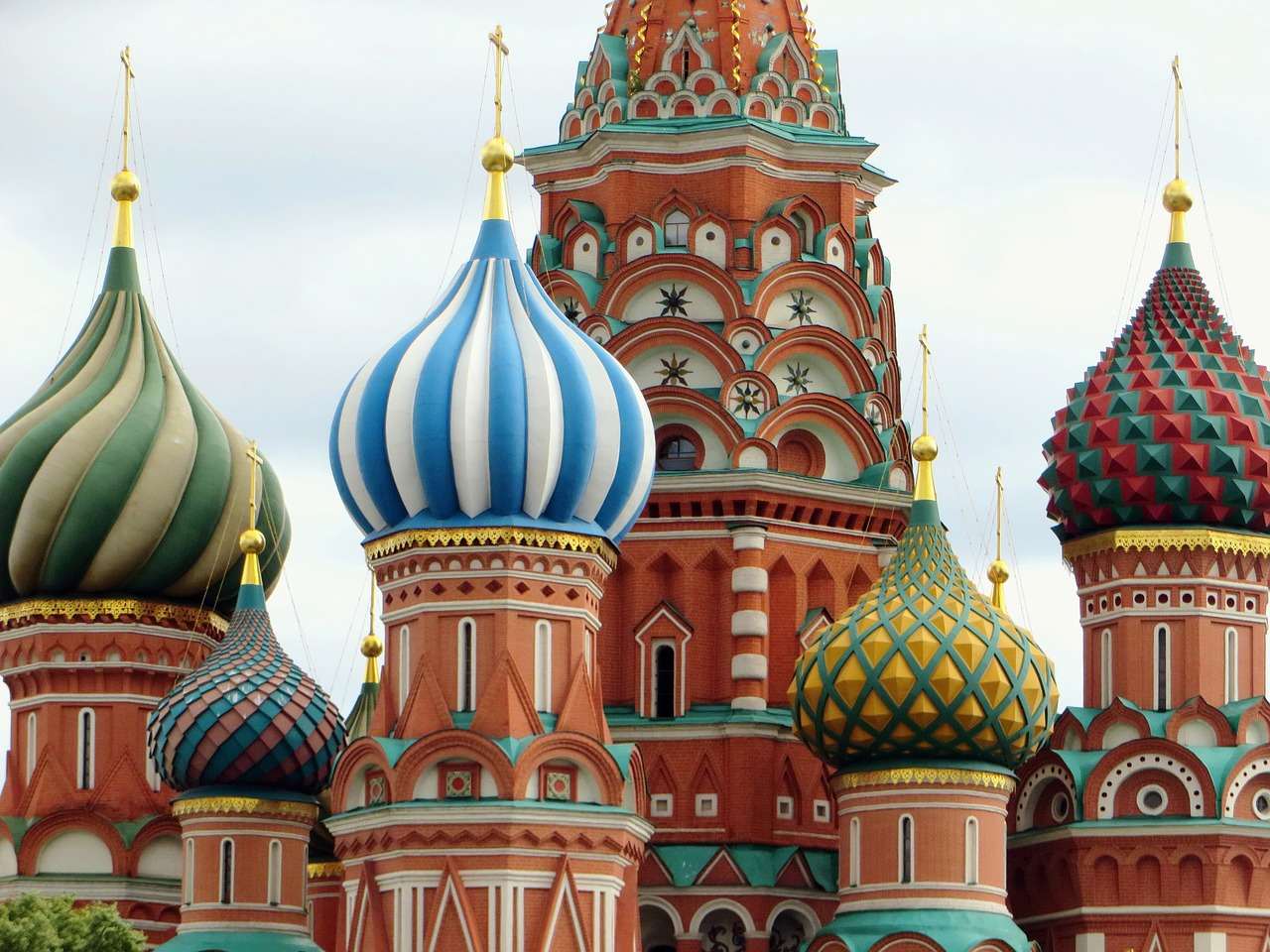St Basil's Cathedral
Share this attraction
Back

St Basil's Cathedral
Moscow
Saint Basil’s Cathedral - the most important information
The Cathedral of Vasily the Blessed, commonly known as Saint Basil's Cathedral, is an Orthodox church in Red Square of Moscow and is one of the most popular cultural symbols of Russia. The building, now a museum, is officially known as the Cathedral of the Intercession of the Most Holy Theotokos on the Moat, or Pokrovsky Cathedral. It was built from 1555 to 1561 on orders from Ivan the Terrible. It was the city's tallest building until the completion of the Ivan the Great Bell Tower in 1600. The cathedral has nine domes (each one corresponding to a different church) and is shaped like the flame of a bonfire rising into the sky, a design that has no parallel in Russian architecture. This monument is now a part of the UNESCO World Heritage List since 1990 and remains the most unusual church in Russia and has become an enigmatic symbol of Moscow itself.
History of the Saint Basil’s Cathedral
After successfully finalizing the Russo-Kazan war, tsar Ivan IV ordered the construction of a new stone cathedral on the site of Trinity Church to commemorate his campaigns. This kind of connecting the church with war accomplishments was something new for the Moscow people. In the 16th and 17th centuries, the church, perceived (as with all churches in Byzantine Christianity) as the earthly symbol of the Heavenly City, was popularly known as the "Jerusalem" and served as an allegory of the Jerusalem Temple in the annual Palm Sunday parade attended by the Patriarch of Moscow and the Tsar.
The original building, known as Trinity Church and later Trinity Cathedral, contained eight chapels arranged around a ninth, central chapel dedicated to the Intercession. This church had dynamic development. It has been burnt several times and many times repaired, Finally, The church briefly enjoyed Vladimir Lenin's "personal interest"; in 1923 it became a public museum, though religious services continued until 1929. That was part of the program of state’s atheism and the church was confiscated from the Russian Orthodox community as part of the Soviet Union's antireligious campaigns and became a part of the State Historical Museum.
The original building, known as Trinity Church and later Trinity Cathedral, contained eight chapels arranged around a ninth, central chapel dedicated to the Intercession. This church had dynamic development. It has been burnt several times and many times repaired, Finally, The church briefly enjoyed Vladimir Lenin's "personal interest"; in 1923 it became a public museum, though religious services continued until 1929. That was part of the program of state’s atheism and the church was confiscated from the Russian Orthodox community as part of the Soviet Union's antireligious campaigns and became a part of the State Historical Museum.
Working hours and tickets
- The church is open daily for visiting: Last admission is 45 minutes before closing. Visiting hours of the church depend on the time of the year, June – August: 10 a.m. – 6 p.m; September, October, May: 11 a.m. – 6 p.m; November – April: 11 a.m. – 5 p.m.
- Tickets: You can buy the tickets at the entrance and they cost 700 rubles (it's free for children up to 16 years old). Besides that, you can check out some group tours and purchase your tickets online.
Please note that the church is not pram/wheelchair-friendly. The visitors have to climb a very steep staircase to reach the second floor.
How to get to St Basil’s Cathedral?
This museum is easy to find. It is located in Red Square and you can easily spot it. That being said, the nearest metro stations are 'Okhotny Ryad', 'Teatralnaya', 'Ploschad Revolyutsii', and 'Kitay-Gorod'.
Saint Basil’s Cathedral trivia
There is a lot of mystery surrounding this magnificent museum and its beauty is painted with numerous legends that just give this sight an exquisite look. Some of them are:
- The identity of the architect is unknown. Tradition held that the church was built by two architects, Barma and Postnik: the official Russian cultural heritage register lists "Barma and Postnik Yakovlev". Researchers proposed that both names refer to the same person, Postnik Yakovlev or, alternatively, Ivan Yakovlevich Barma (Varfolomey). Legend held that Ivan blinded the architect so that he could not re-create the masterpiece elsewhere.
- Dmitry Shvidkovsky, in his book Russian Architecture and the West, states that "it is like no other Russian building. Nothing similar can be found in the entire millennium of Byzantine tradition from the fifth to the fifteenth century ... a strangeness that astonishes by its unexpectedness, complexity, and dazzling interleaving of the manifold details of its design.
- The exterior of the cathedral was made to look like brickwork. Each era left its trace on the cathedral's architecture. After a fire in 1595, the churches were decorated with onion domes, which acquired their present-day vivid colors only in the 18th century.
- Legend has it that Napoleon wanted to destroy the Cathedral when he realized he couldn't relocate it to Paris.
- A visiting 19th-century French aristocrat, the Marquis de Custine, compared the cathedral to "the scales of a golden fish, the enameled skin of a serpent, the changeful hues of the lizard, the glossy rose and azure of the pigeon's neck." He wondered whether "the men who go to worship God in this box of confectionery work." could be a Christian.
Location
Learn more about this destination
Discover the beauty of the destination through blogs that highlight the most famous landmarks, hidden gems, and provide travel tips for visiting this destination. Embark on an adventure through the stories of experienced travelers.


















